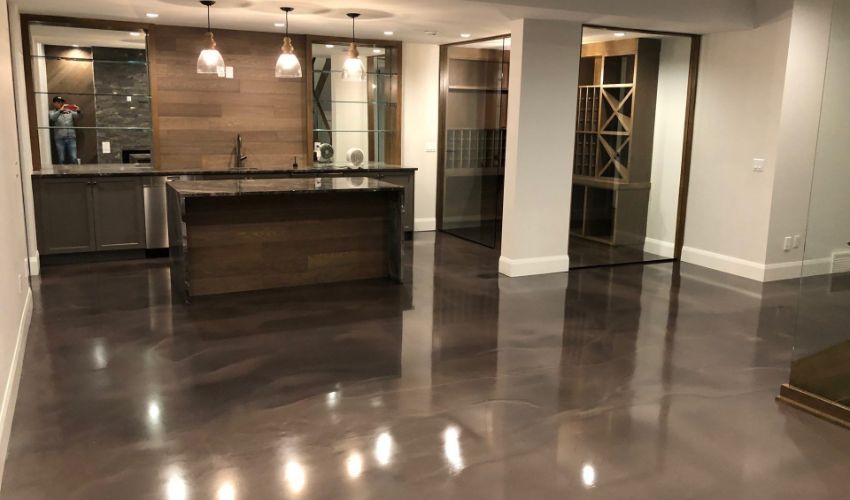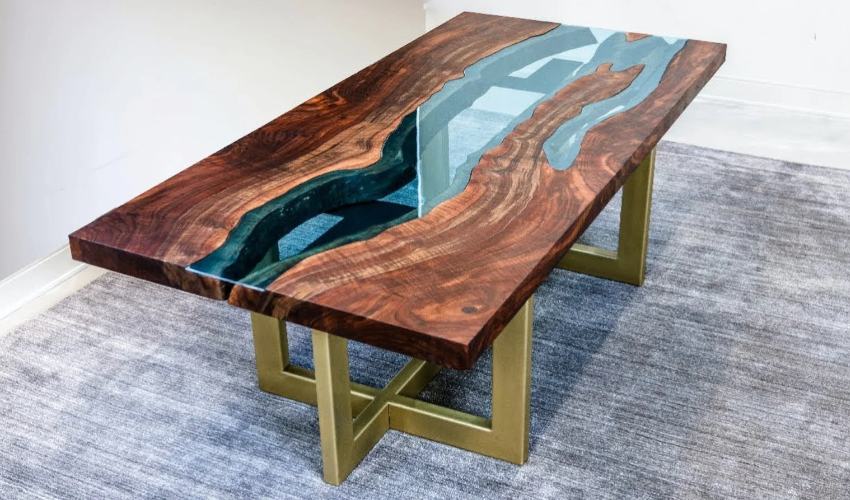What is Terrazzo? It’s a decorative mosaic of marble, granite, glass, or any other cement material with a polished surface. Terrazzo can make floor and wall coverings, countertops, and other architectural projects.
Cementitious Terrazzo is made with a cementitious binder, while epoxy Terrazzo is made with an epoxy binder. Cementitious Terrazzo is more durable and easier to maintain than epoxy Terrazzo, but epoxy Terrazzo is more resistant to staining and easier to clean.
Both types of Terrazzo are available in various colors and designs, so you can choose the option that best suits your needs. Terrazzo is composed of marble, granite, glass, and other materials placed decoratively in cement or epoxy, and it is smoothed to reveal intricate ornamental patterns of colorful flecks.
Terrazzo Is Evolving Alongside the Technological Revolution
The current epoxy resin system altered design and installation aspects and expanded their uses. The adaptability of Terrazzo has allowed designers to consider a floor as a blank canvas, allowing them to create distinctive color schemes and patterns.
What is Concrete Terrazzo?
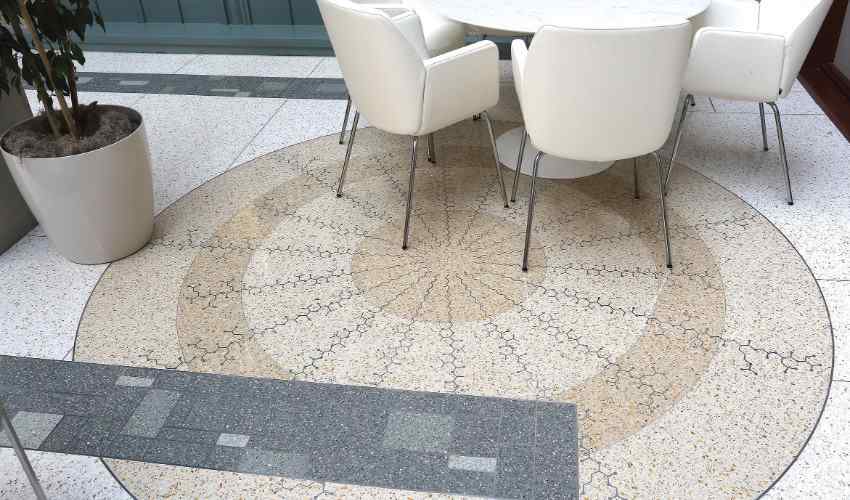
Cementitious terrazzo flooring consists of aggregates bound with cement. Cementitious terrazzo flooring is much thicker and heavier than epoxy terrazzo flooring, making it the superior option for several applications.
Cementitious terrazzo flooring is available in various intricate patterns with varied color schemes and earth tones. This kind of Terrazzo is much thicker and can sustain substantial impact.
What Defines Cementitious Terrazzo Apart from Epoxy Terrazzo?
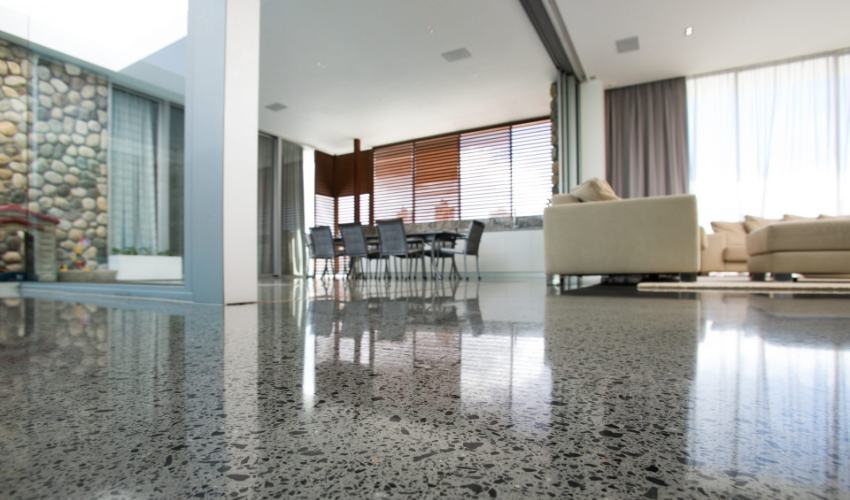
Cementitious Terrazzo is made with a Portland cement binder, while epoxy terrazzo uses an epoxy resin binder. There are several key differences between these two types of Terrazzo:
- Cementitious Terrazzo is much more porous than epoxy terrazzo, making it more susceptible to staining and damage from spills.
- Epoxy terrazzo is much more challenging and durable than cementitious Terrazzo, making it a better choice for high-traffic areas.
- Cementitious Terrazzo can be repaired relatively quickly, while epoxy terrazzo is much more difficult to repair once damaged.
- Epoxy terrazzo typically costs more than cementitious Terrazzo but also requires less maintenance.
How to Choose the Right Terrazzo for You!
There are two types of Terrazzo: cementitious and epoxy, and both have unique benefits that can make them the right choice for your home or business.
Cementitious Terrazzo

- It Is a more traditional Terrazzo made with Portland cement, aggregate, and water.
- It Is less expensive.
- It Is easier to repair.
- It can be developed in several shades and textures.
Epoxy Terrazzo

- Is it a newer Terrazzo made with epoxy resin, aggregate, and filler?
- It Is more expensive.
- It Is more complex to repair.
- It is available in several different shades and designs.
List of Things You Need to Know About Terrazzo
- Terrazzo is a flooring material made up of chips of marble, quartz, glass, or other materials set in a cementitious or epoxy binder.
- Terrazzo can be used for both indoor and outdoor applications. Cementitious Terrazzo is made with a Portland cement base, while epoxy terrazzo uses an epoxy resin base.
- Cementitious Terrazzo is more commonly used in commercial applications, while epoxy terrazzo is more often used in residential settings.
- Terrazzo is a durable, low-maintenance flooring option that can last for many years.
What are the Benefits of Cementitious Terrazzo?
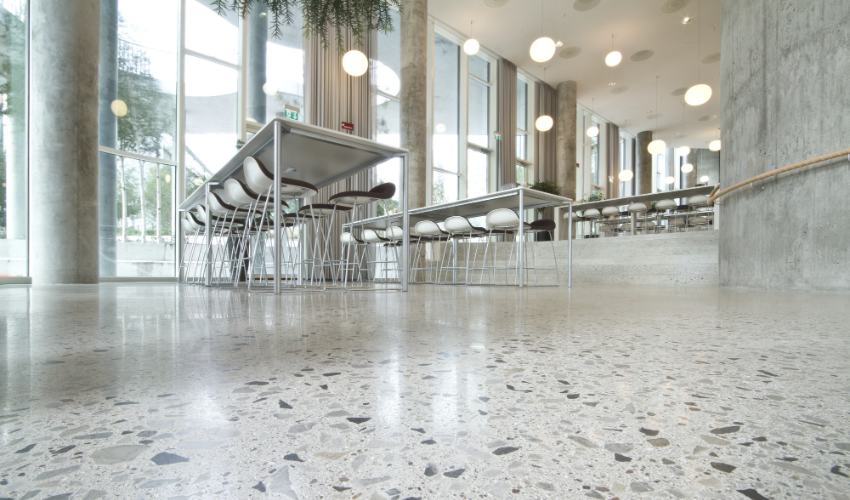
There are many benefits to choosing cementitious Terrazzo over epoxy terrazzo. Cementitious Terrazzo is more sustainable because it is made with natural materials and does not require harsh chemicals. It is also more durable, making it ideal for high-traffic areas. Cementitious Terrazzo is also easier to repair than epoxy terrazzo, so if any damage does occur, it can be quickly and easily fixed.
What are the Disadvantages of Cementitious Terrazzo?
A few disadvantages to cementitious Terrazzo should be considered before choosing it for a project. One disadvantage is that it is more porous than epoxy terrazzo, meaning it is more likely to stain. It is also more difficult to repair than epoxy terrazzo if it chips or cracks. Additionally, cementitious Terrazzo can be susceptible to efflorescence when salt deposits form on the material’s surface and cause discoloration.
There Are Several Benefits To Epoxy Terrazzo
- Epoxy terrazzo is more durable and easy to maintain than cementitious Terrazzo.
- Epoxy terrazzo can be installed in a shorter time frame than cementitious Terrazzo.
- Epoxy terrazzo is less susceptible to staining and fading than cementitious Terrazzo.
- Epoxy terrazzo can be refinished more easily than cementitious Terrazzo.
There Are Also Some Disadvantages To Epoxy Terrazzo
- Epoxy terrazzo can be more expensive than cementitious Terrazzo.
- Epoxy terrazzo can be slippery when wet, which can be a safety hazard.
- Some people prefer the look of cementitious Terrazzo over epoxy terrazzo.
Conclusion
If you’re considering Terrazzo for your next home improvement project, it’s important to know the difference between cementitious and epoxy Terrazzo. Cementitious Terrazzo is made with Portland cement, while epoxy terrazzo is made with a resin-based binder.
Both types of Terrazzo are strong and durable, but epoxy terrazzo is more resistant to staining and easier to maintain. When choosing between the two, consider your needs and preferences to decide which type of Terrazzo is right for you.

